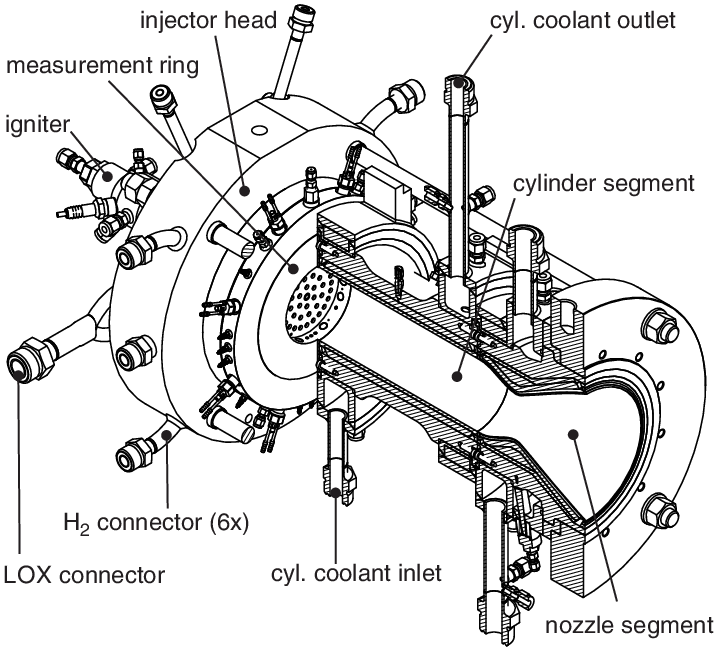
Project title: Injection-Coupling Instabilities in Cryogenic Rocket Engines
Supervisors: Professor Aimee Morgans, Juan Guzmán Iñigo
Rocket engine combustion chambers favour the excitation of thermoacoustic instabilities caused by the two-way coupling of acoustic disturbances and heat release with the chamber. The thermoacoustic instabilities result in large amplitude self-excited oscillations which can severely damage the engine. It is therefore a priority to predict and suppress instabilities during the early design stages.
Coaxial shear injectors, used for hydrogen/liquid-oxygen (LOX) engines, experience high frequency thermoacoustic instabilities due to injection-coupling. The German Aerospace Center (DLR) investigated this through experiments on the research combustor BKD which suggested that the injector is self-excited by the coupling of the longitudinal modes of the injector tube with the whistling of the injector’s inlet orifice.
In last year’s project on this topic, Philipp Brokof computationally investigated this mechanism and concluded that the injector can be self-excited by the orifice flow dynamics. It was proposed that the second longitudinal mode of the injector might be coupled with the first tangential mode of the combustion chamber. A coupled analysis of the liquid-oxygen dome and combustion chamber was suggested to investigate this further. Additionally, it was hypothesized that the oxygen dome is acting as a Helmholtz resonator due to low frequency peaks observed in the power spectral density versus frequency plots over a range of pressure drops. This includes those corresponding to the stable and unstable cases studied during a water experiment to better understanding the behaviour of the LOX injector.
This project aims to investigate the feasibility of both these mechanisms for the BKD combustor, using the commercial software COMSOL Multiphysics. First a simulation of the water experiment run on the LOX injector will be attempted to see whether the addition of a plenum, representing the oxygen dome shows the behaviours of a Helmholtz resonator. Then a simulation of the BKD combustor for various modes of operation will be run to determine whether the hypothesis of coupling between the second longitudinal mode of the injector to the first tangential mode of the combustion chamber is correct.